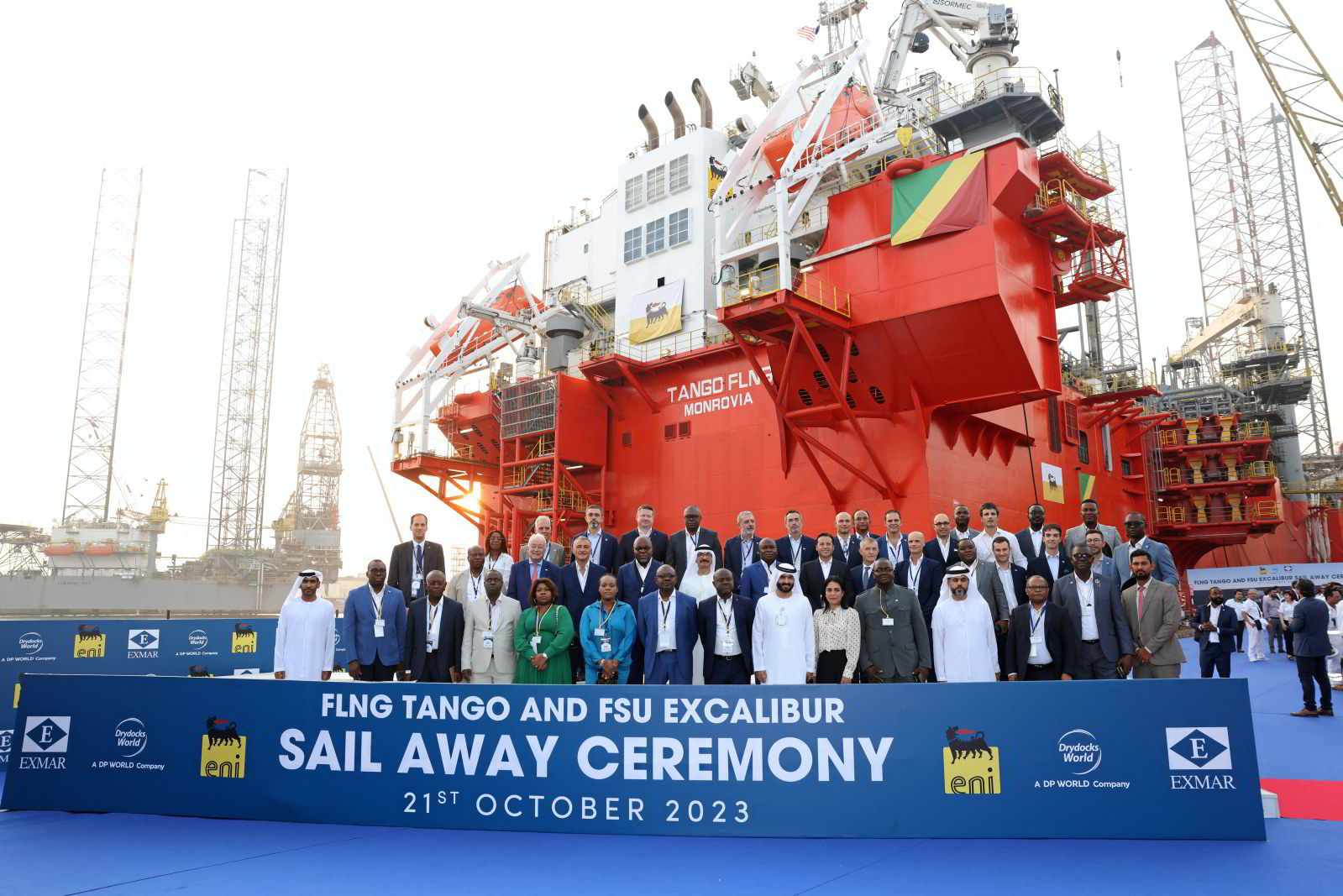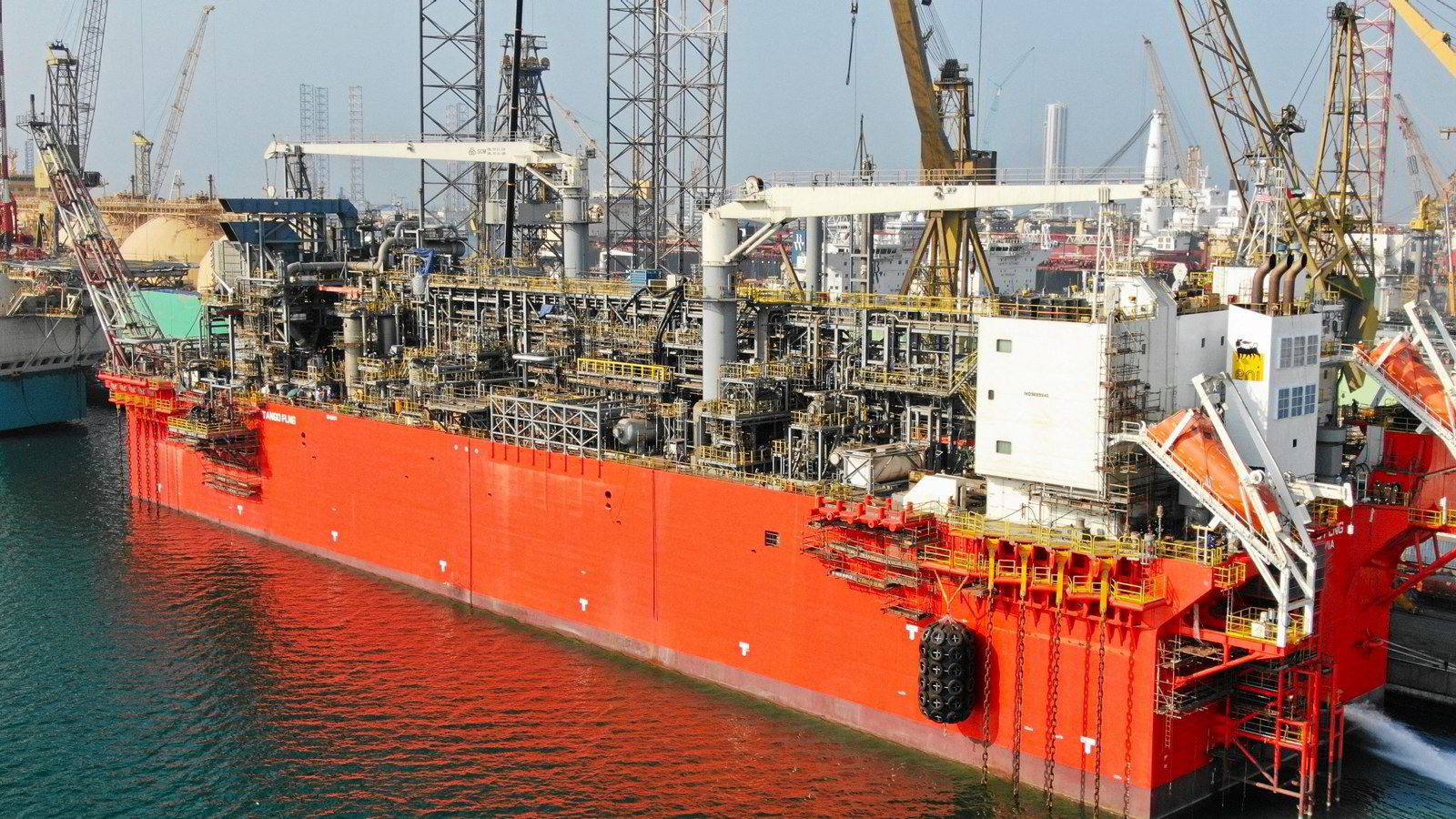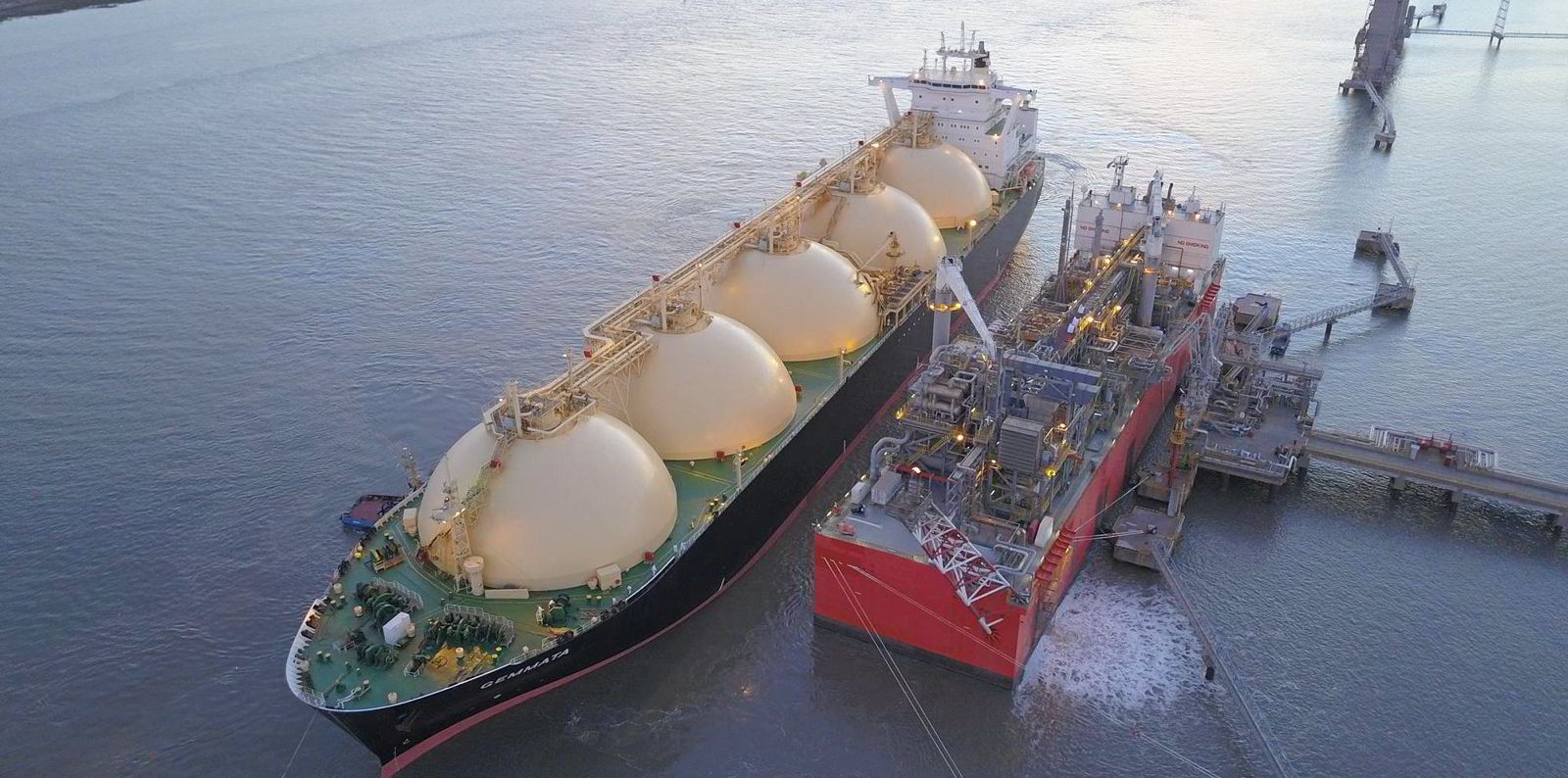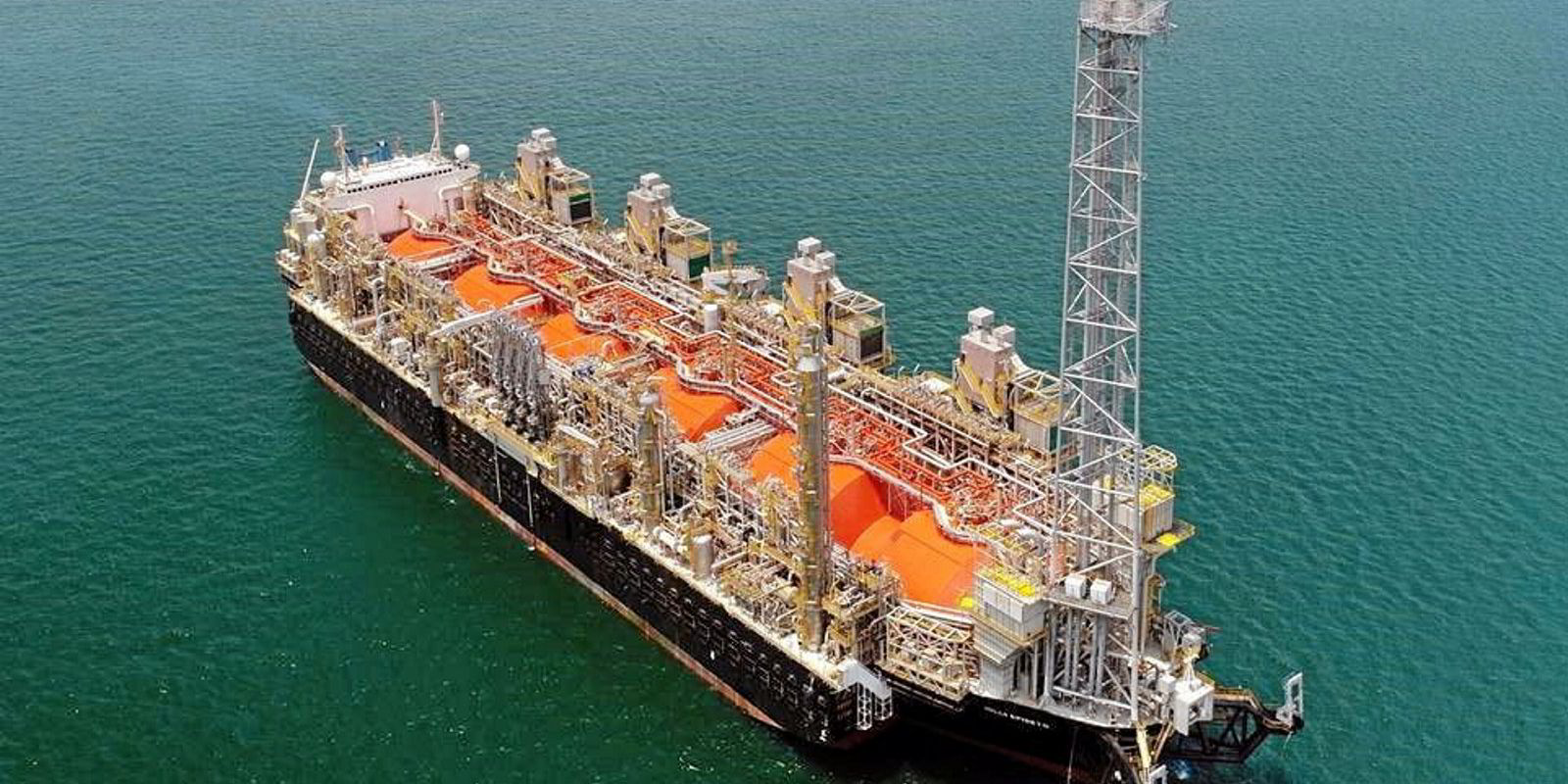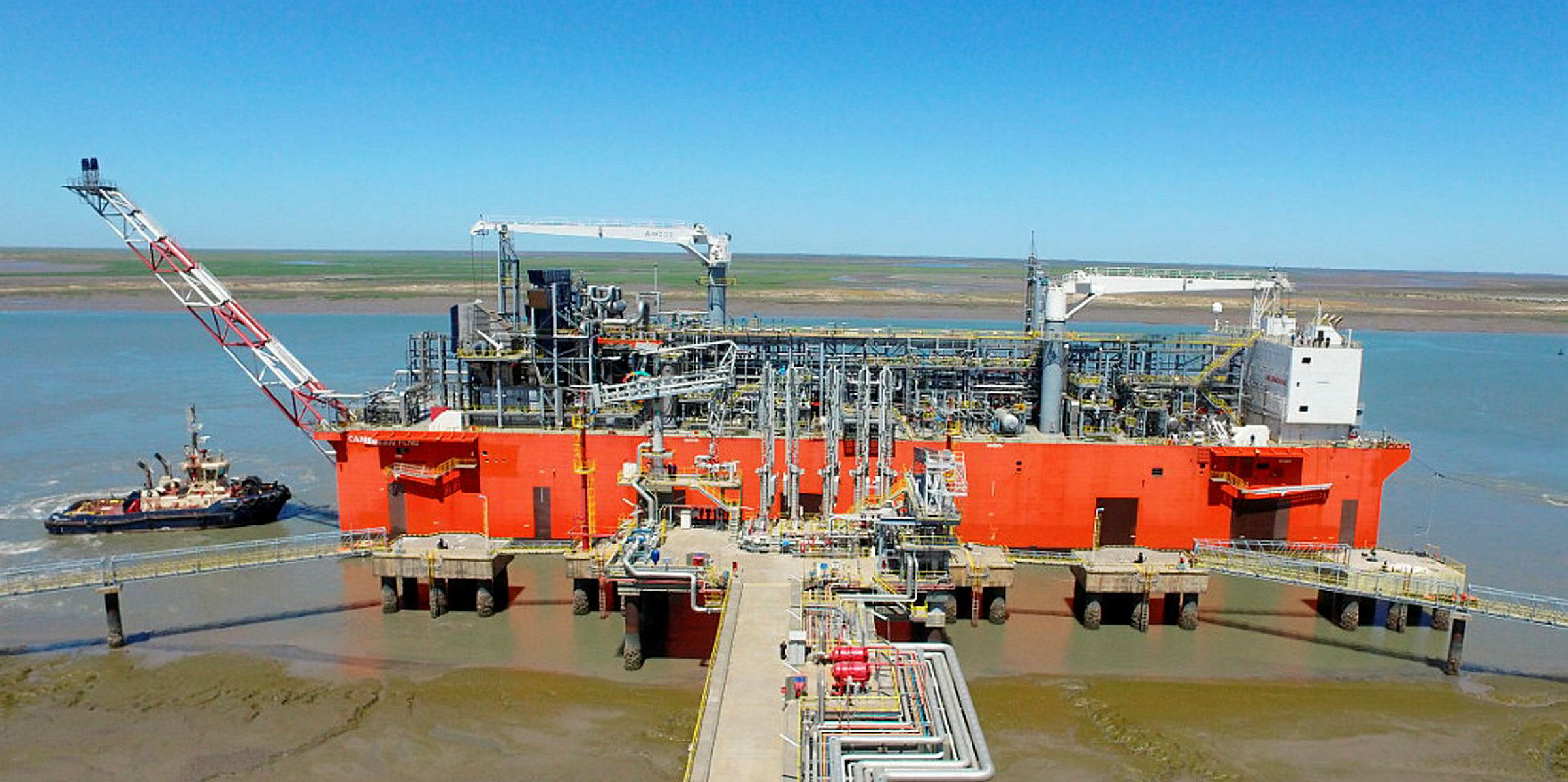Two key pieces of Eni’s upcoming floating LNG production project in the Republic of Congo were preparing to leave Drydocks World in Dubai at the weekend in an unusual but high-profile double sailaway ceremony.
Barge-based FLNG production unit, the 16,100-cbm Tango FLNG (built 2017), which has a liquefaction capacity of approximately 1bn cbm per annum, will be moored 3 km offshore along with the 138,000-cbm Excalibur FSU (built 2002).
The Minister of Hydrocarbons in the Republic of the Congo, Bruno Jean Richard Itoua; Exmar executive chairman Nicolas Saverys; Eni chief operating officer natural resources Guido Brusco; DP World chairman Ahmed bin Sulayem; and Societe Nationale des Petroles du Congo managing director Maixent Raoul Ominga were among the VIPs who joined Saturday’s sailaway party in Dubai.
Shipowner and infrastructure provider Exmar said: “This milestone is in line with the timeline of Eni’s Congo LNG project, whose first phase will start-up in December 2023.”
While Exmar has sold Tango FLNG to Eni, Excalibur FSU is on a long-term charter to Eni.
At the time of the sale, Exmar said the value of the transaction was in the range of $572m and $694m, depending on the actual performance of Tango FLNG during the first six months on site. The Antwerp-headquartered owner will be responsible for all terminal operations on the Congo LNG Project.
Exmar said: “The project will contribute to meet the Republic of the Congo’s energy needs while seizing the opportunity to exploit the surplus gas through LNG production, allowing the country to join the group of global exporters of LNG with record completion time.”
Eni’s Congo LNG project will use Marine XII gas resources and existing production facilities in a new phased approach targeting the zero routine gas flaring objective.
Separately, Eni has ordered a 2.4 million tonnes per annum FLNG unit from China’s Wison (Nantong) Heavy Industries, which also built Tango FLNG, to upscale its LNG production in Congo.
Exmar has served as an engineering, procurement and conversion contractor for the two soon-to-depart vessels in their modification project.
Jonathan Raes, Exmar executive director of infrastructure, told TradeWinds that both units had spent five months in Drydocks World, where upgrade work was undertaken in partnership with the yard and Eni.
Tango FLNG will leave the yard on board a heavylift vessel, Seaway7’s Seaway Swan. The units will move separately as Excalibur has a higher sailing speed.
The Seaway Swan with Tango FLNG on board is expected to take around three weeks to reach Congo. The Tango FLNG will be offloaded in Luanda and wet towed to reach its destination, Pointe Noire.
Installation and mooring will take place once the floater is on site.
Raes said the units have been readied to perform 10 years plus of operations offshore Congo. For Tango FLNG, this entailed mooring upgrades and preparing the unit for long-term continuous operations.
Excalibur was upgraded to work as an FSU and made ready for the spread mooring system.
Innovation
Raes said the mooring upgrades are required to properly secure the units offshore from Congo. The mooring system is an innovation developed by Exmar’s in-house engineering subsidiary in Houston, Exmar Offshore Co.
He explained that this “split mooring system” essentially combines the two floaters as one facility, which is then “spread moored”, so the pair of units act as one.
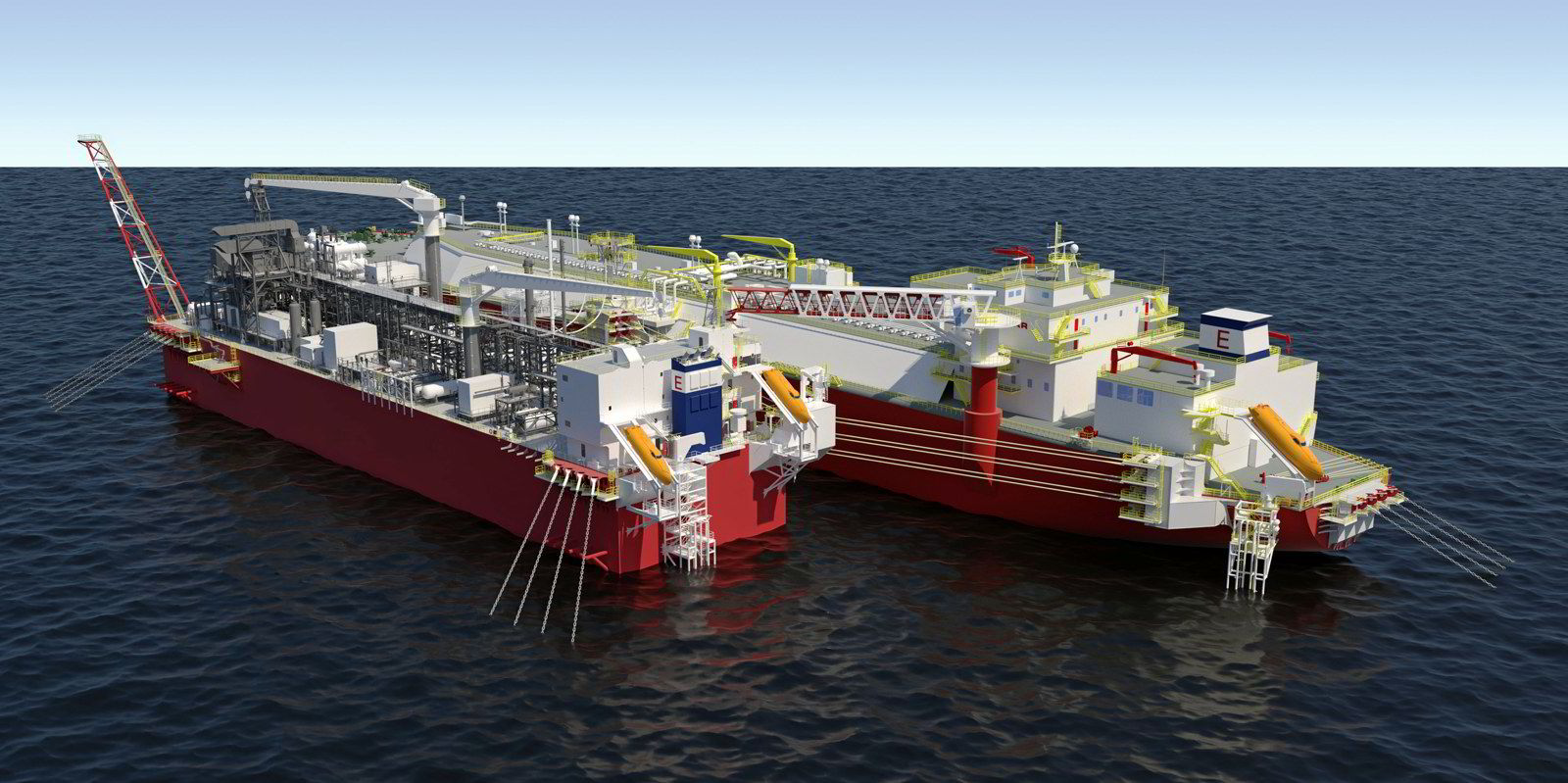
The Exmar director said blocks were added to the hulls to increase the structural strength of those areas that serve as connections for the mooring system.
A newly designed fixed LNG transfer system was installed as the distance between the floaters will be 25 metres.
Raes said at the project’s peak, over two thousand individuals were assigned to the conversion and upgrade works with zero lost time incidents logged over the five months.
Exmar babies
Drydocks World said the conversion included the addition of 12 steel mooring foundation structures, totalling more than 4,000 tonnes of steel, which were key to the combined spread moored configuration.
The yard said it cut the project time significantly by pre-rigging the offshore mooring chains in its Mina Rashid shipyard — a task typically performed offshore.
Both Excalibur and Tango FLNG are close to Exmar’s heart, albeit for different reasons.
Excalibur was the company’s first large LNG carrier, giving South Korea its first export order for a vessel in this sector.
Tango FLNG, the world’s smallest LNG floater, proved slightly more problematic but started from a pioneering idea.
The unit was originally ordered in 2012, but its charterer collapsed, and Exmar was forced to take delivery in 2017 without employment in place.
In November 2018, Exmar inked a 10-year deal on the floater with YPF. It started work in Argentina and produced six cargoes before the charter deal was cancelled.


